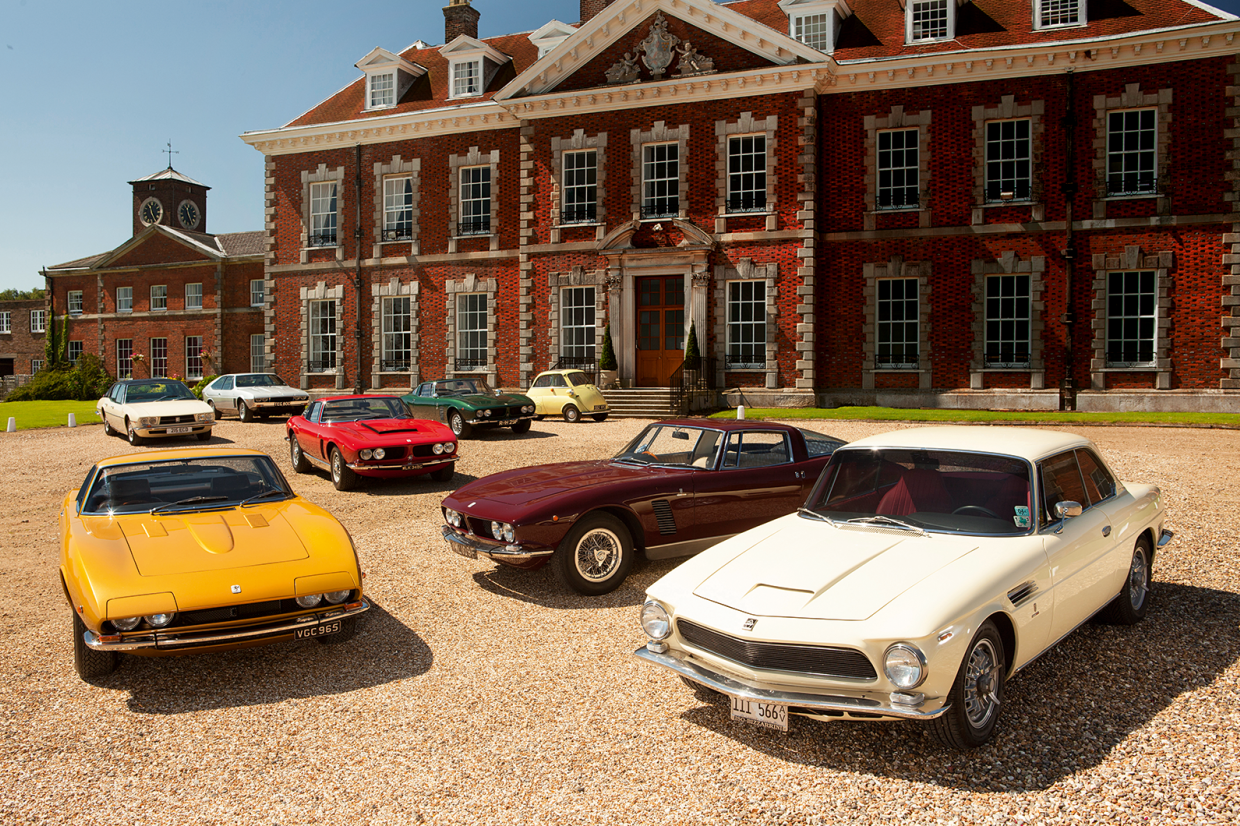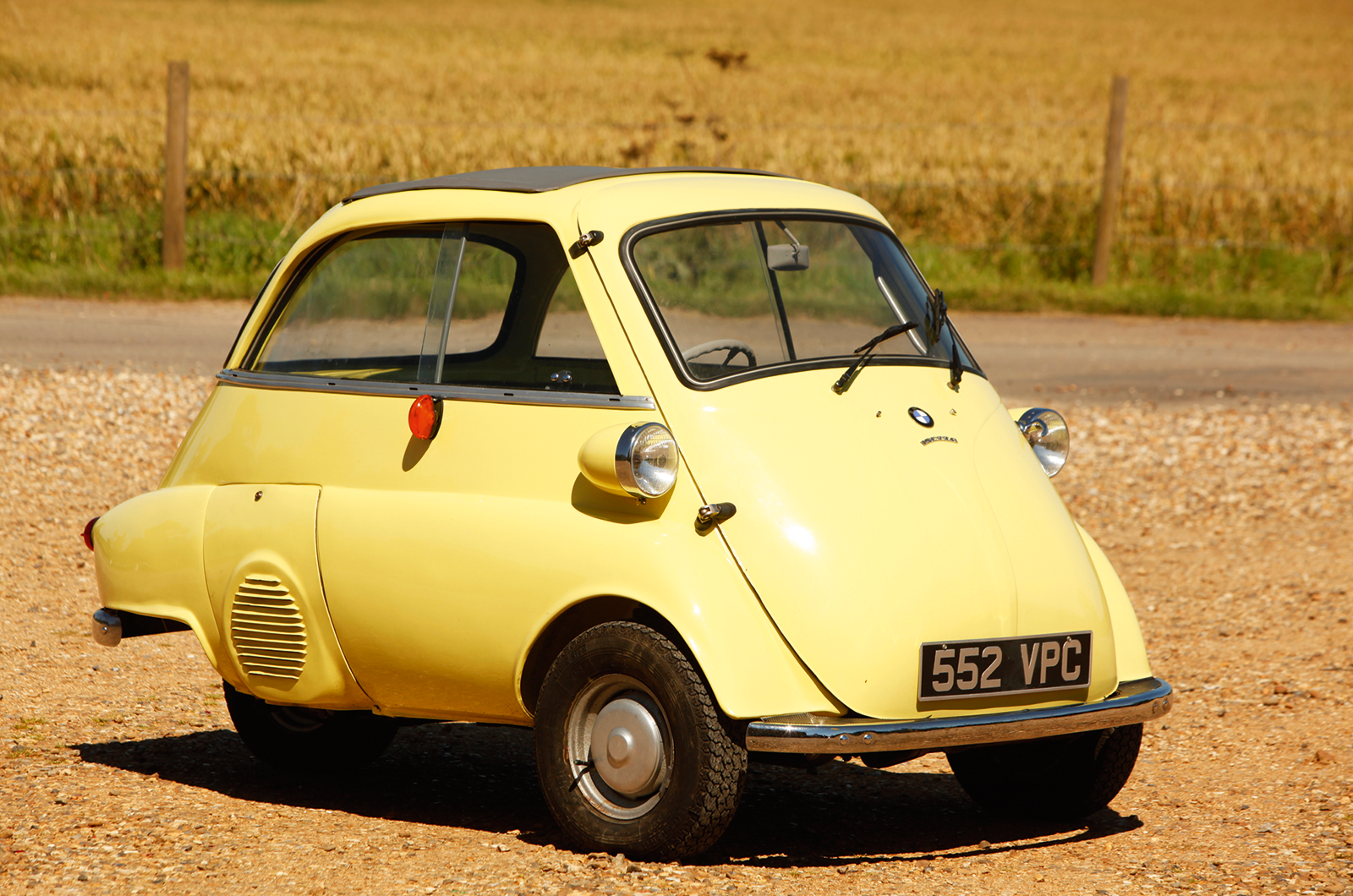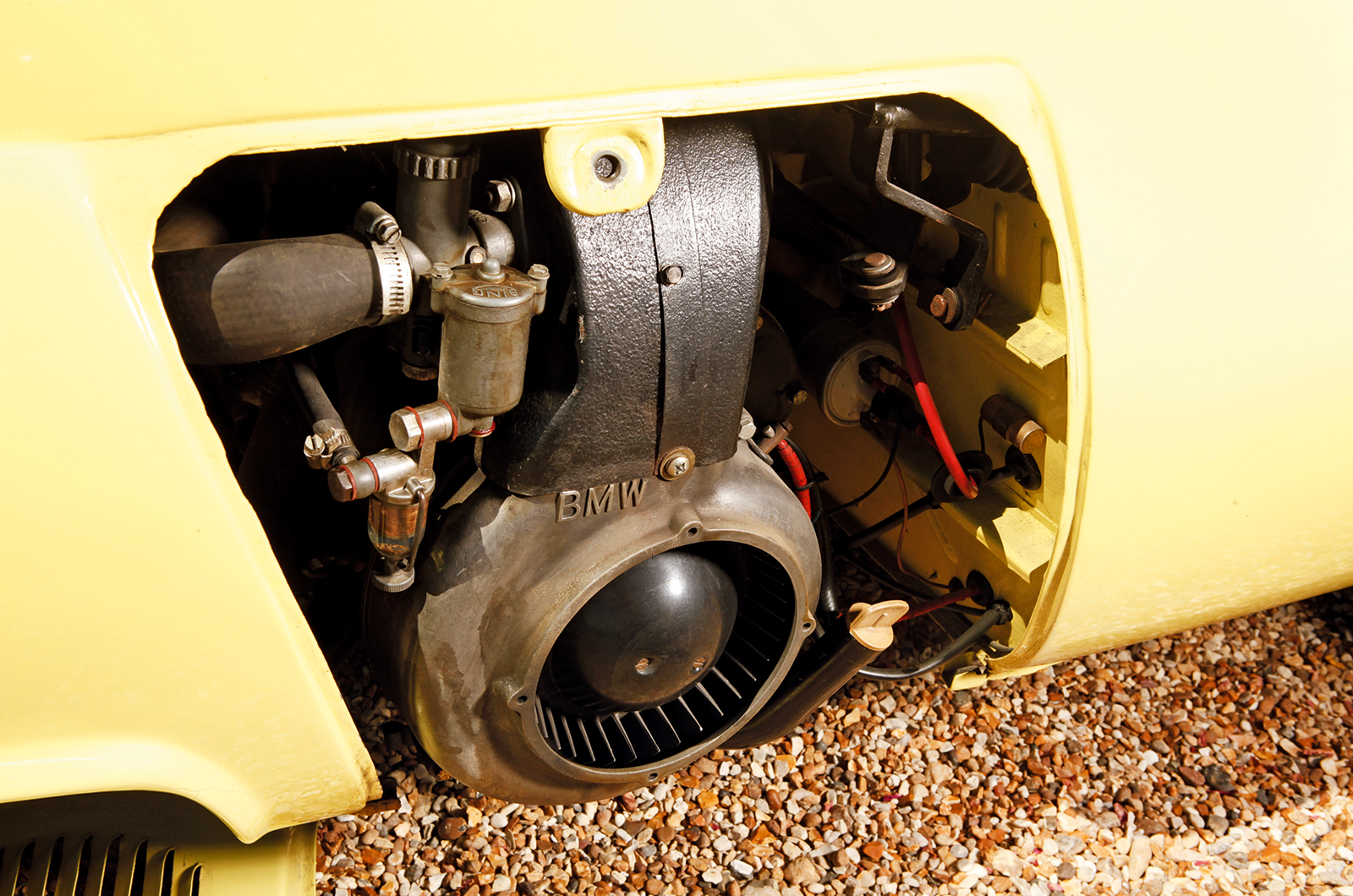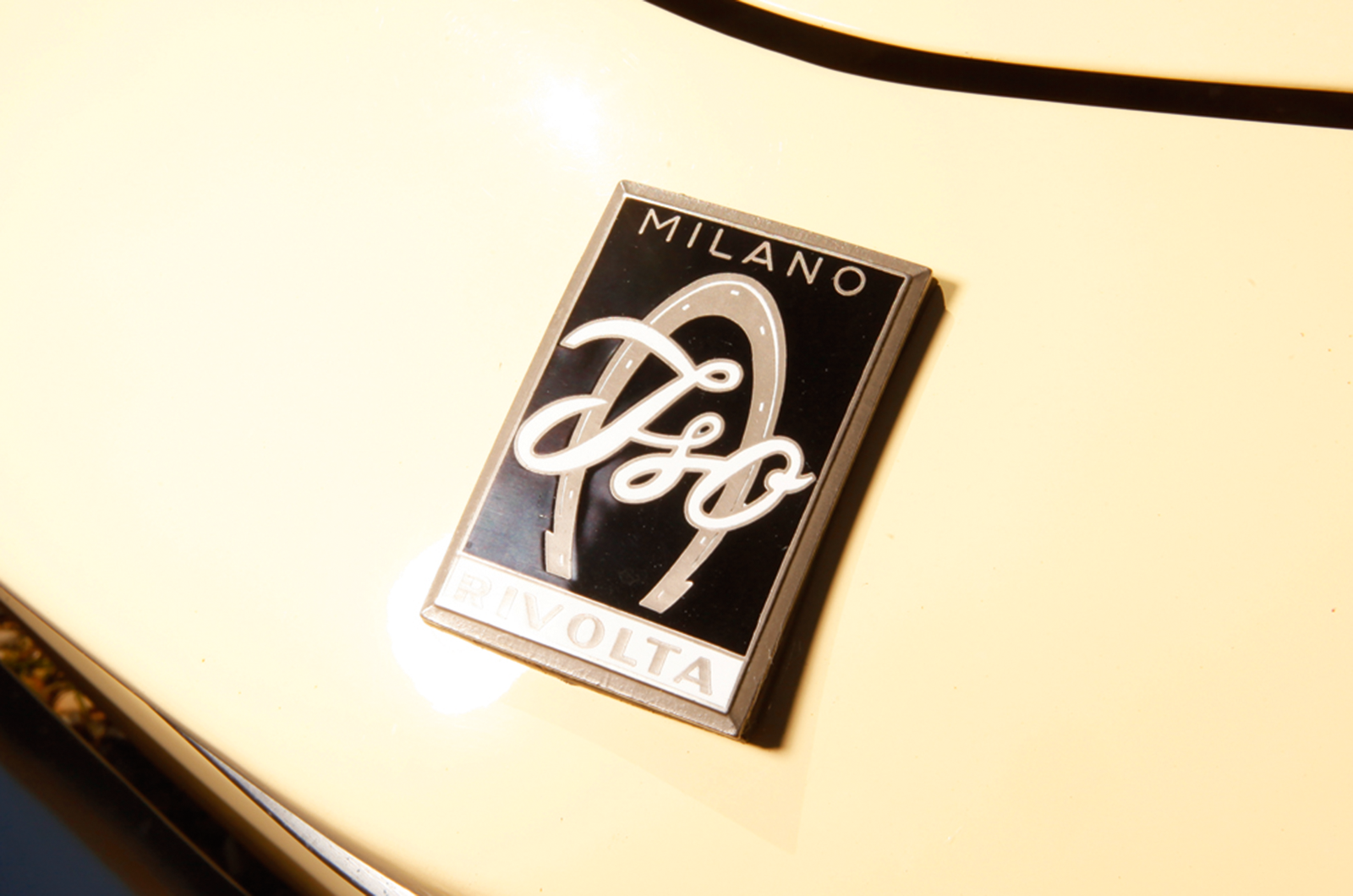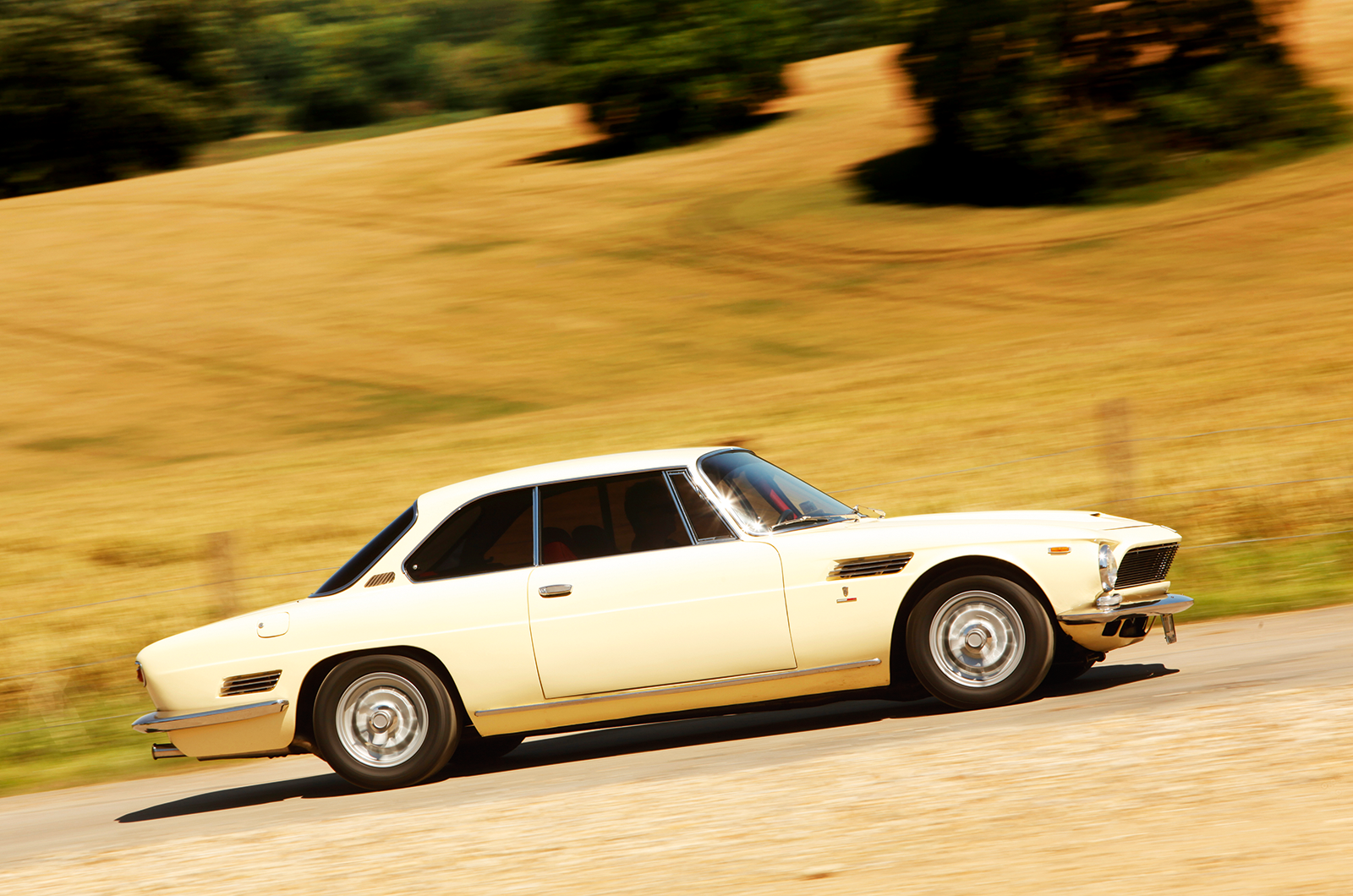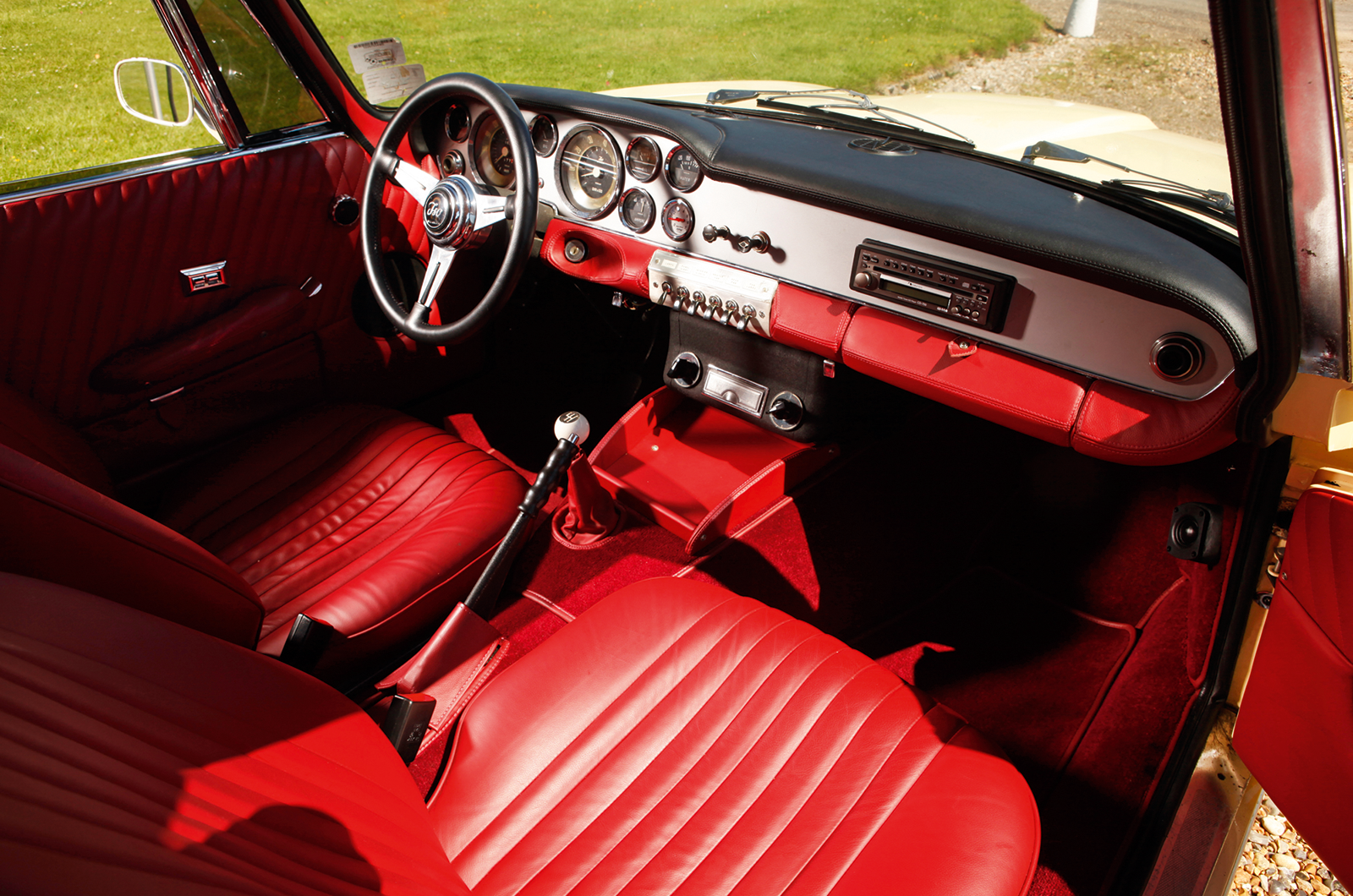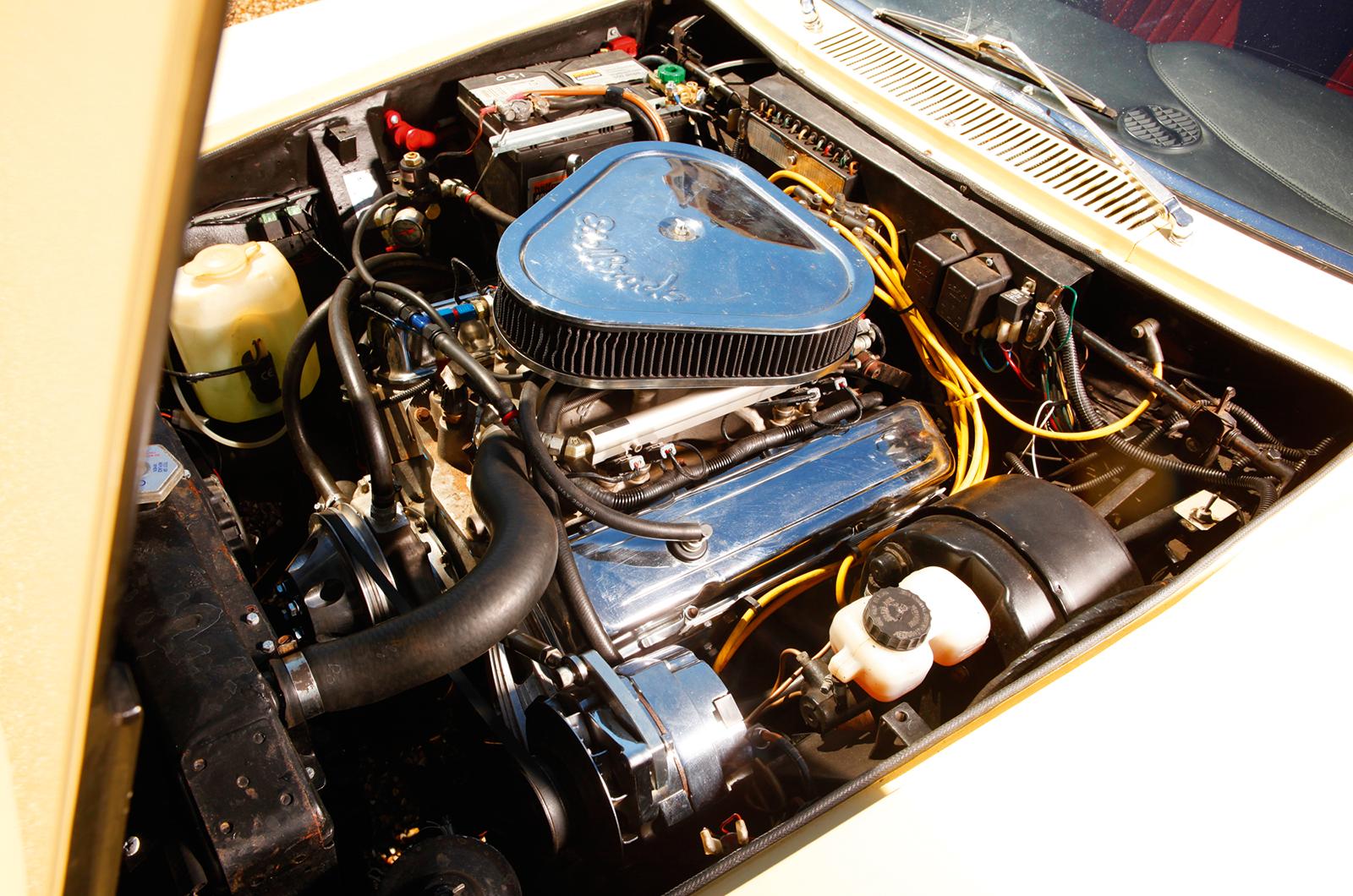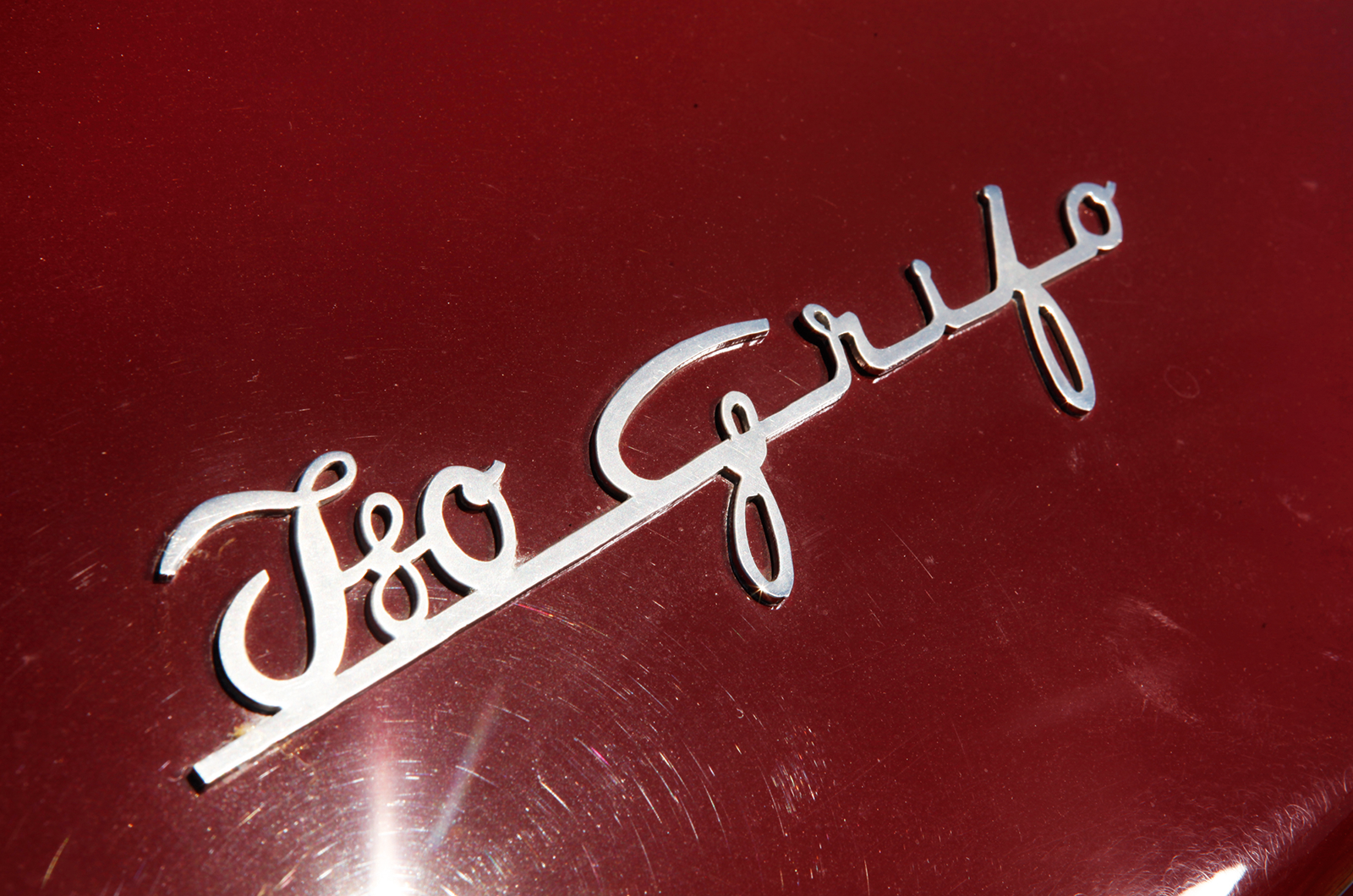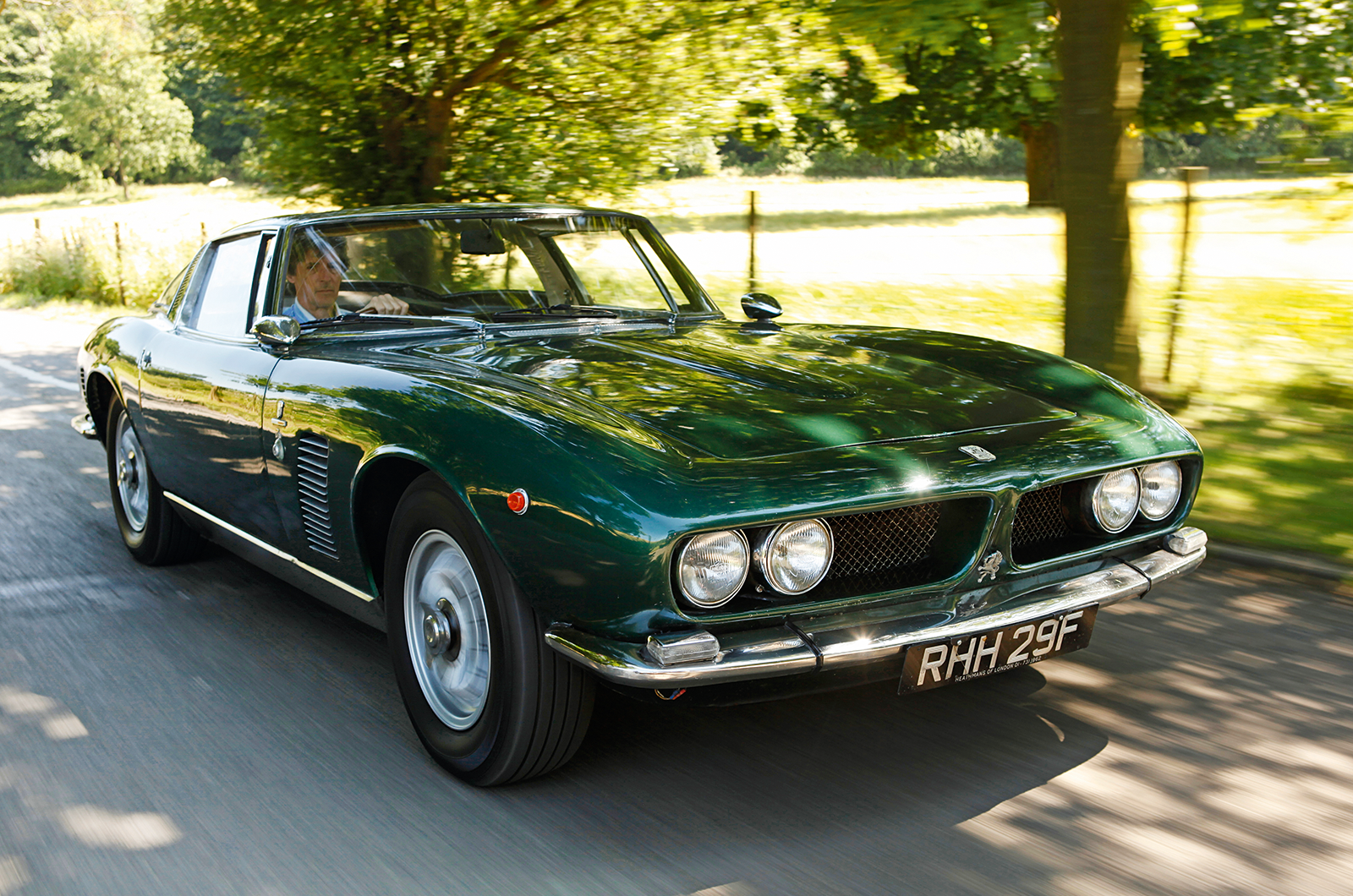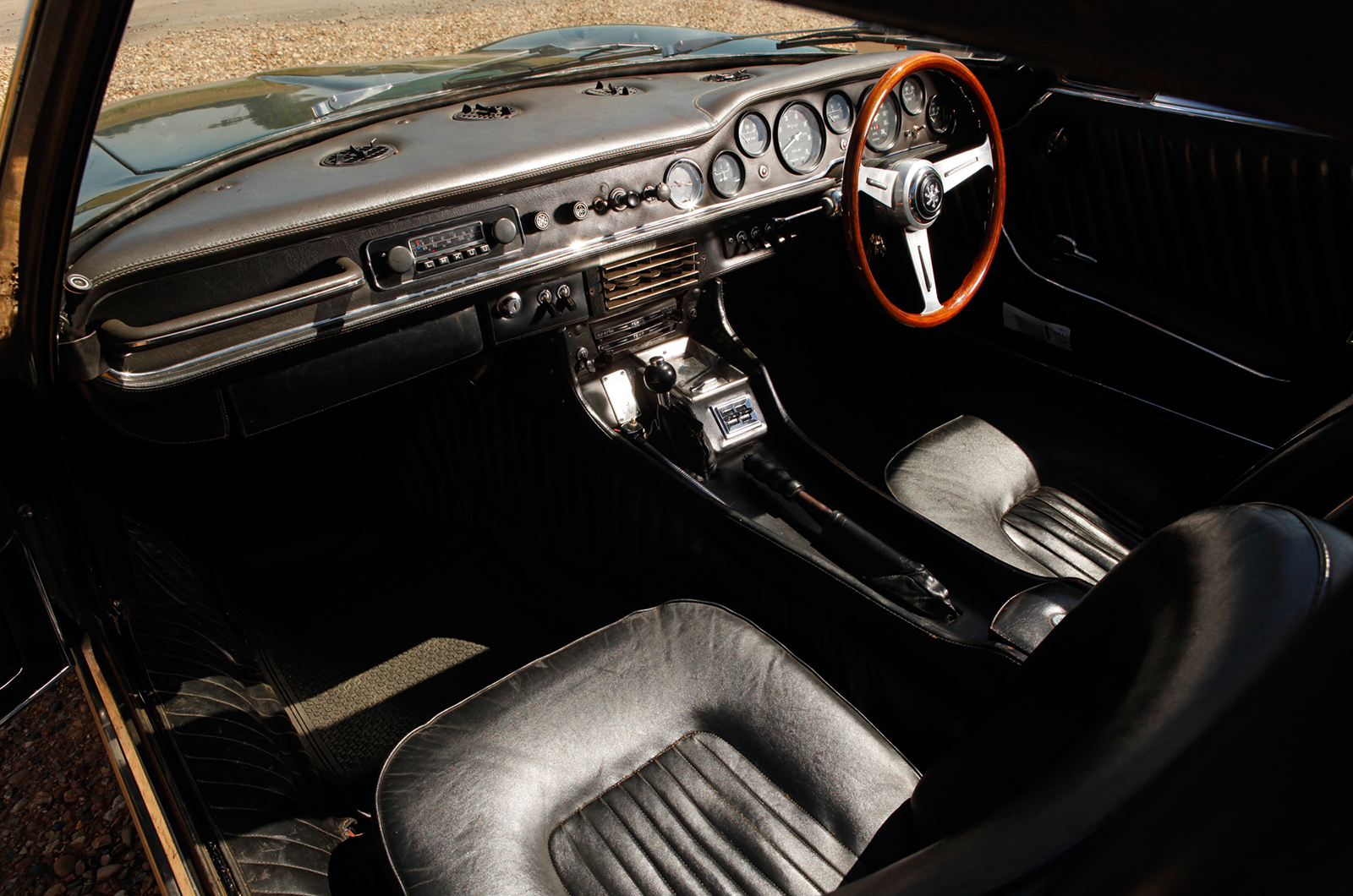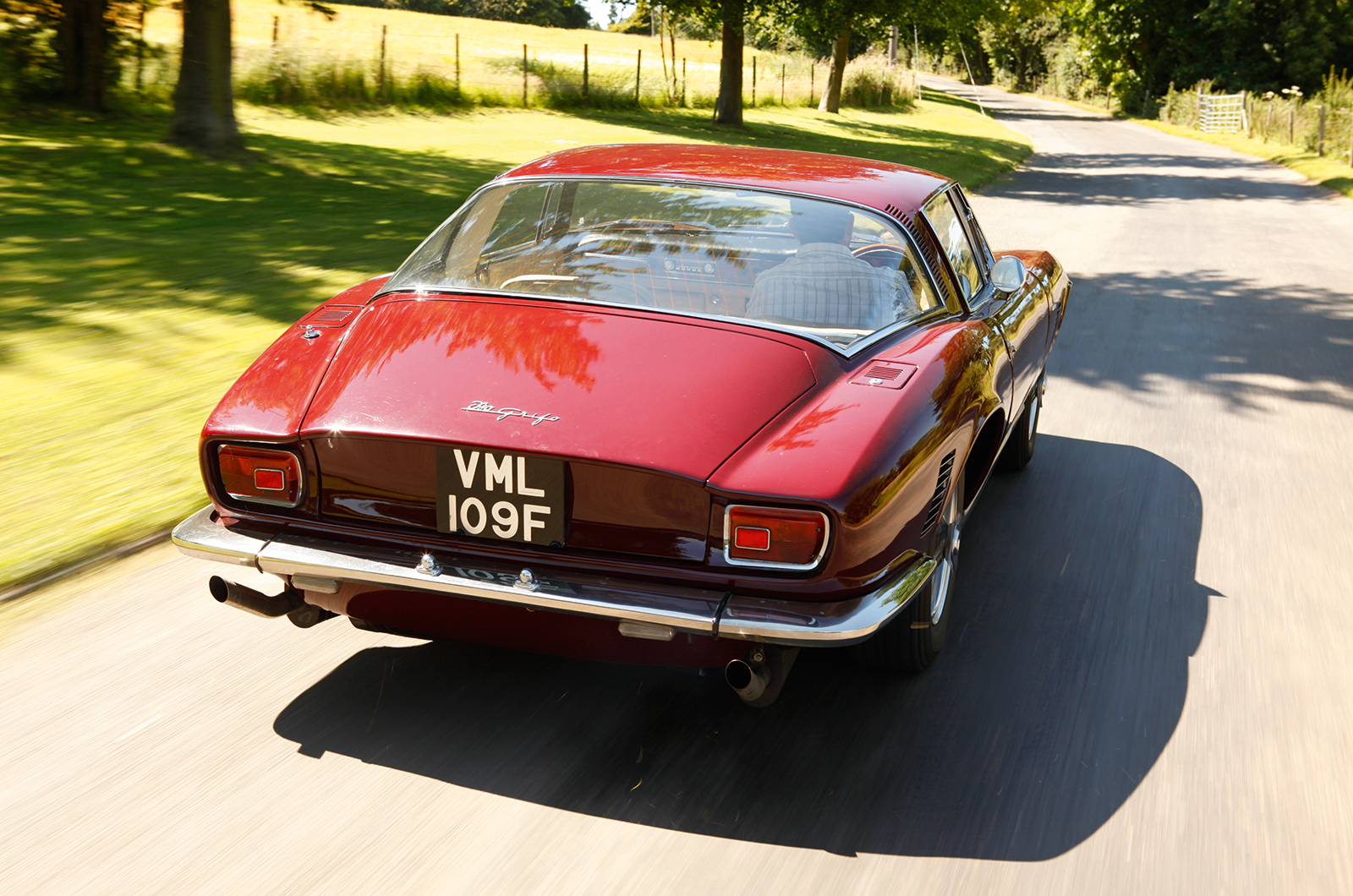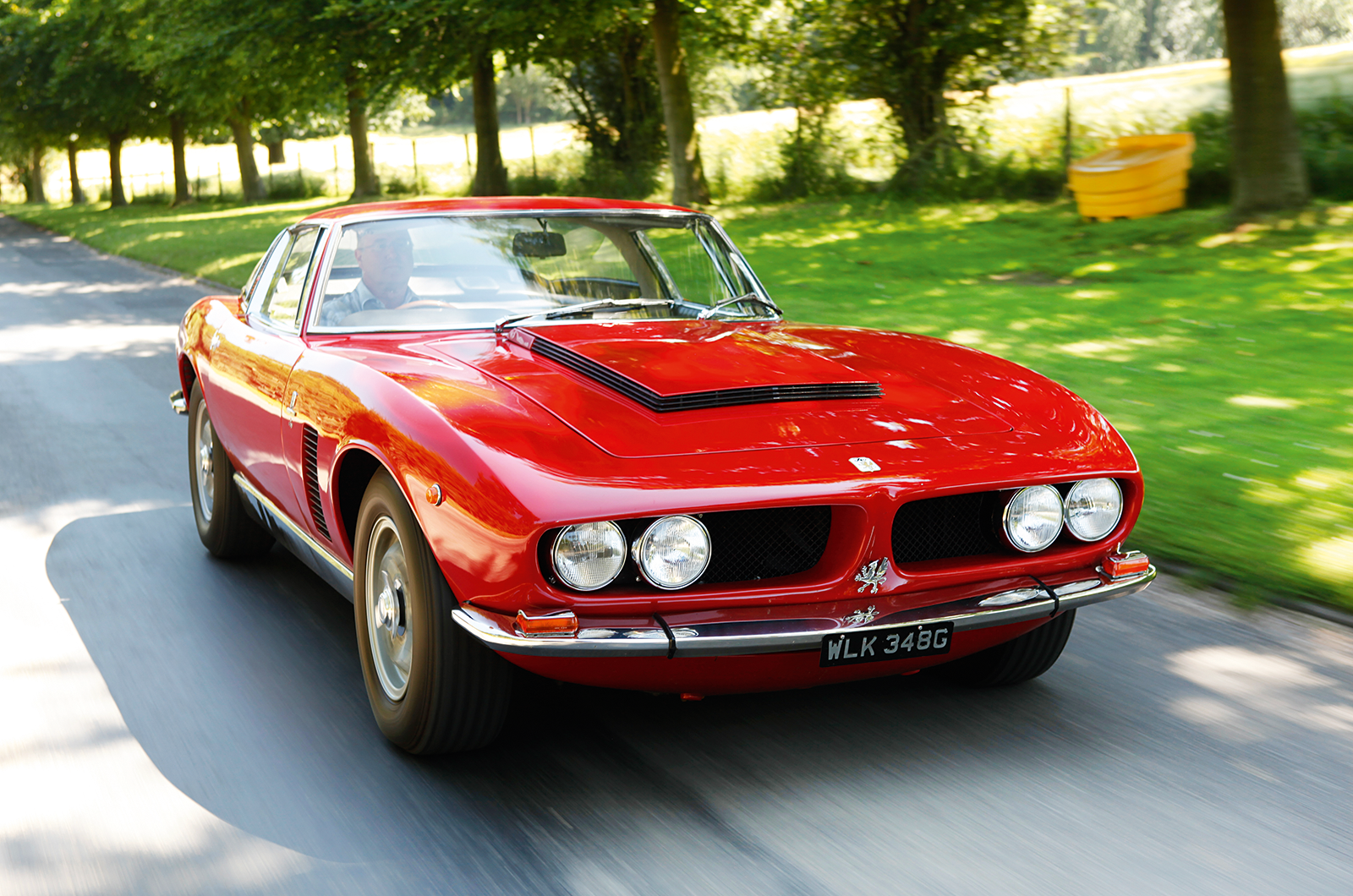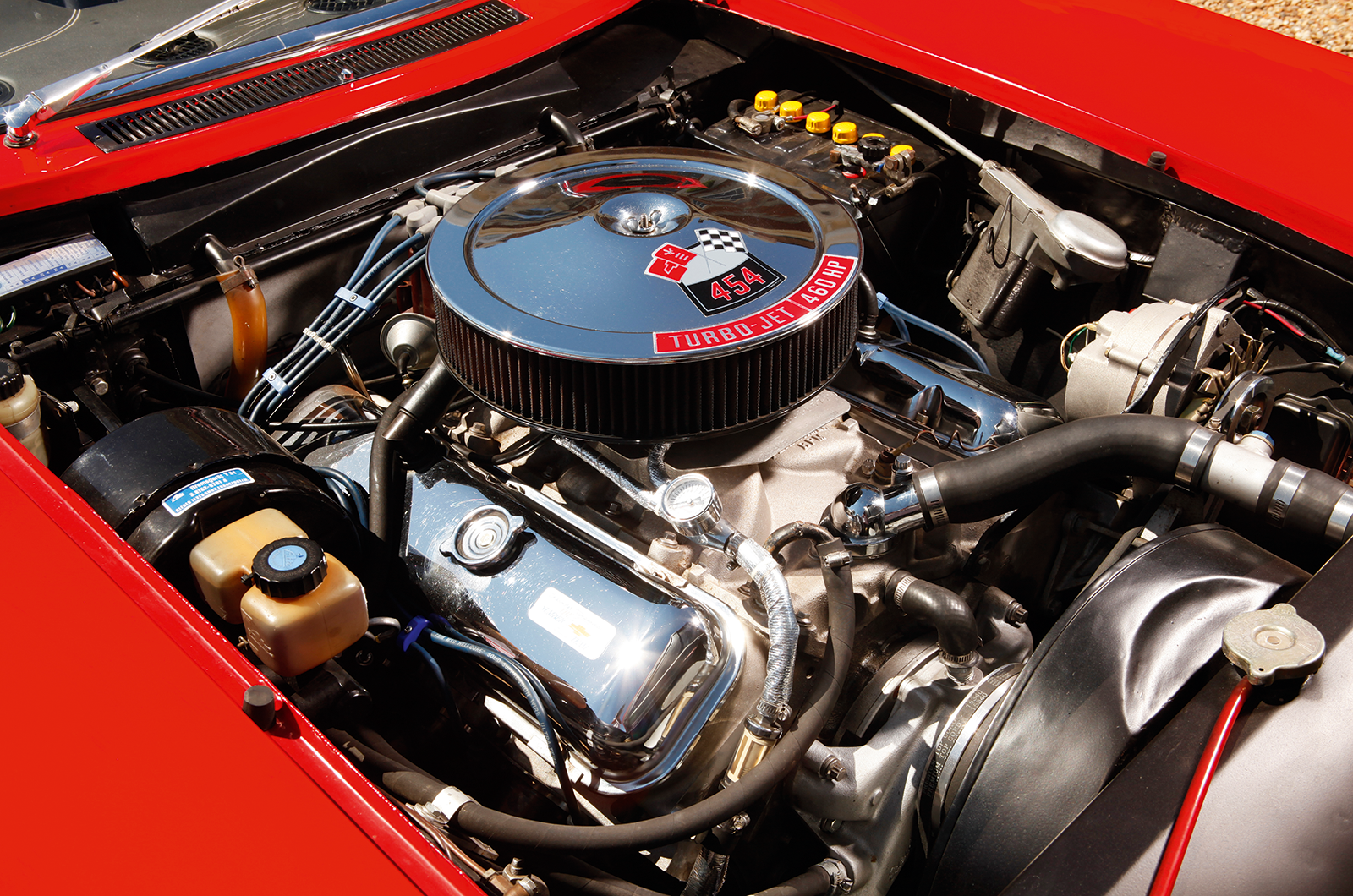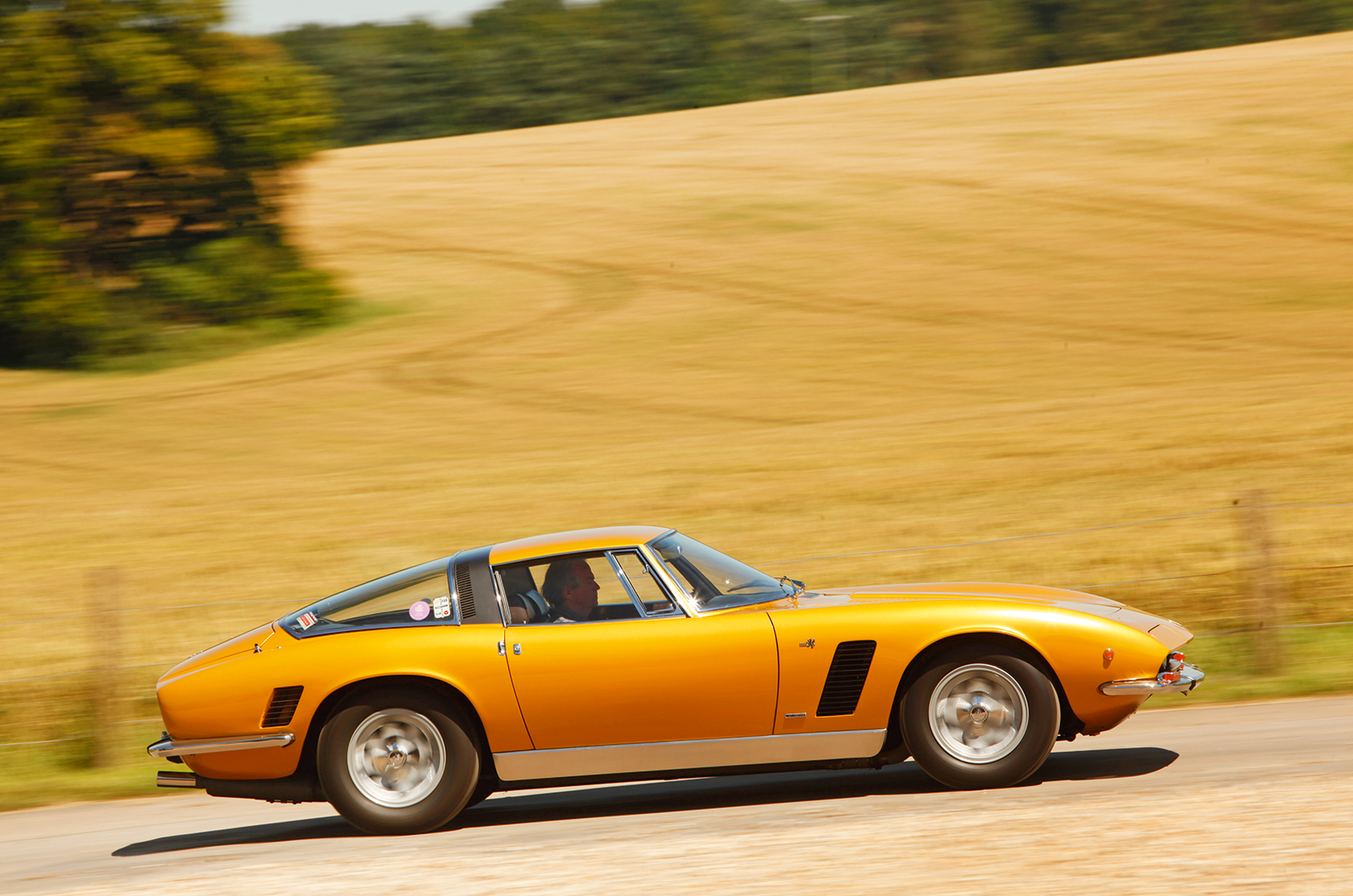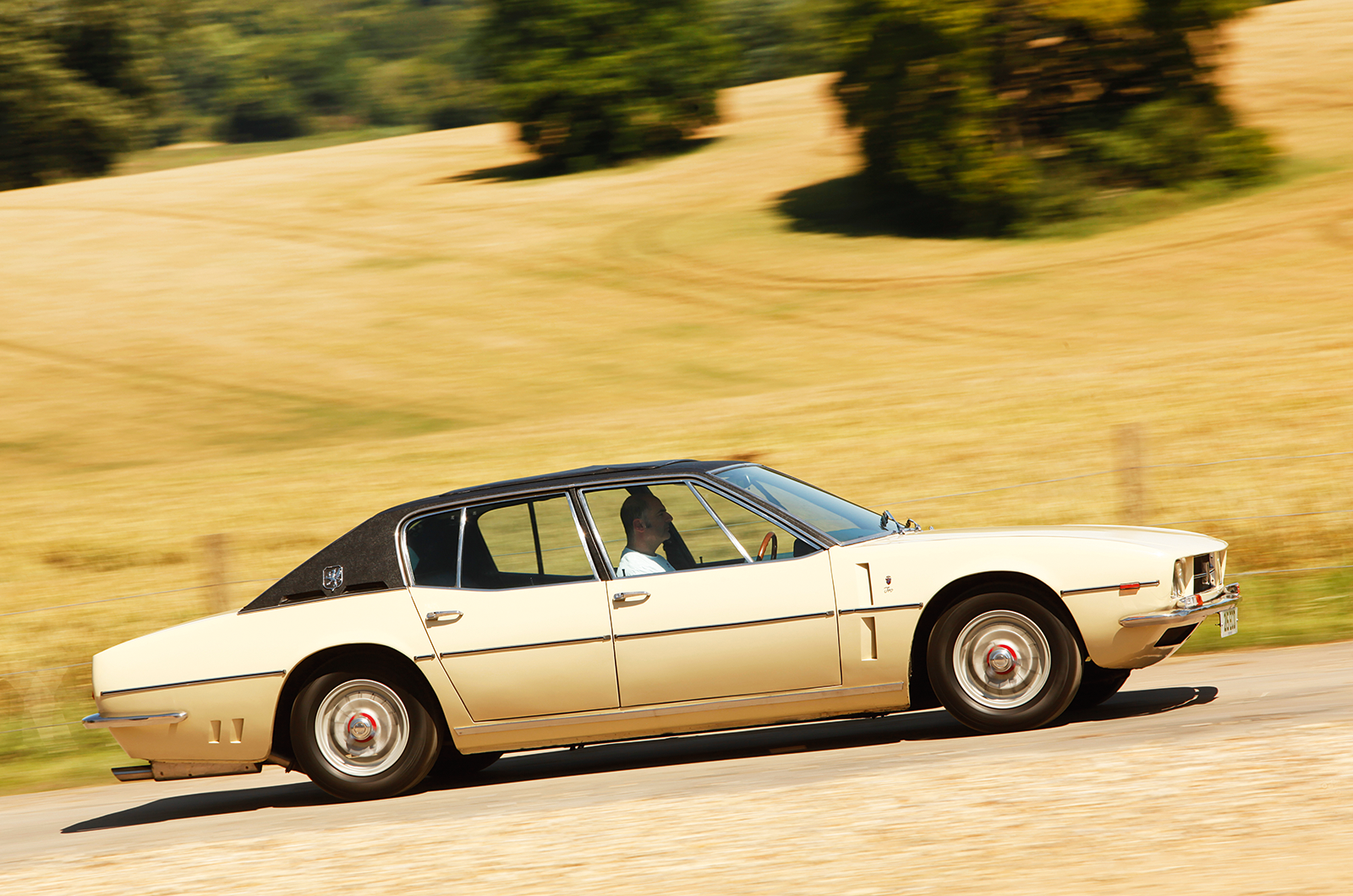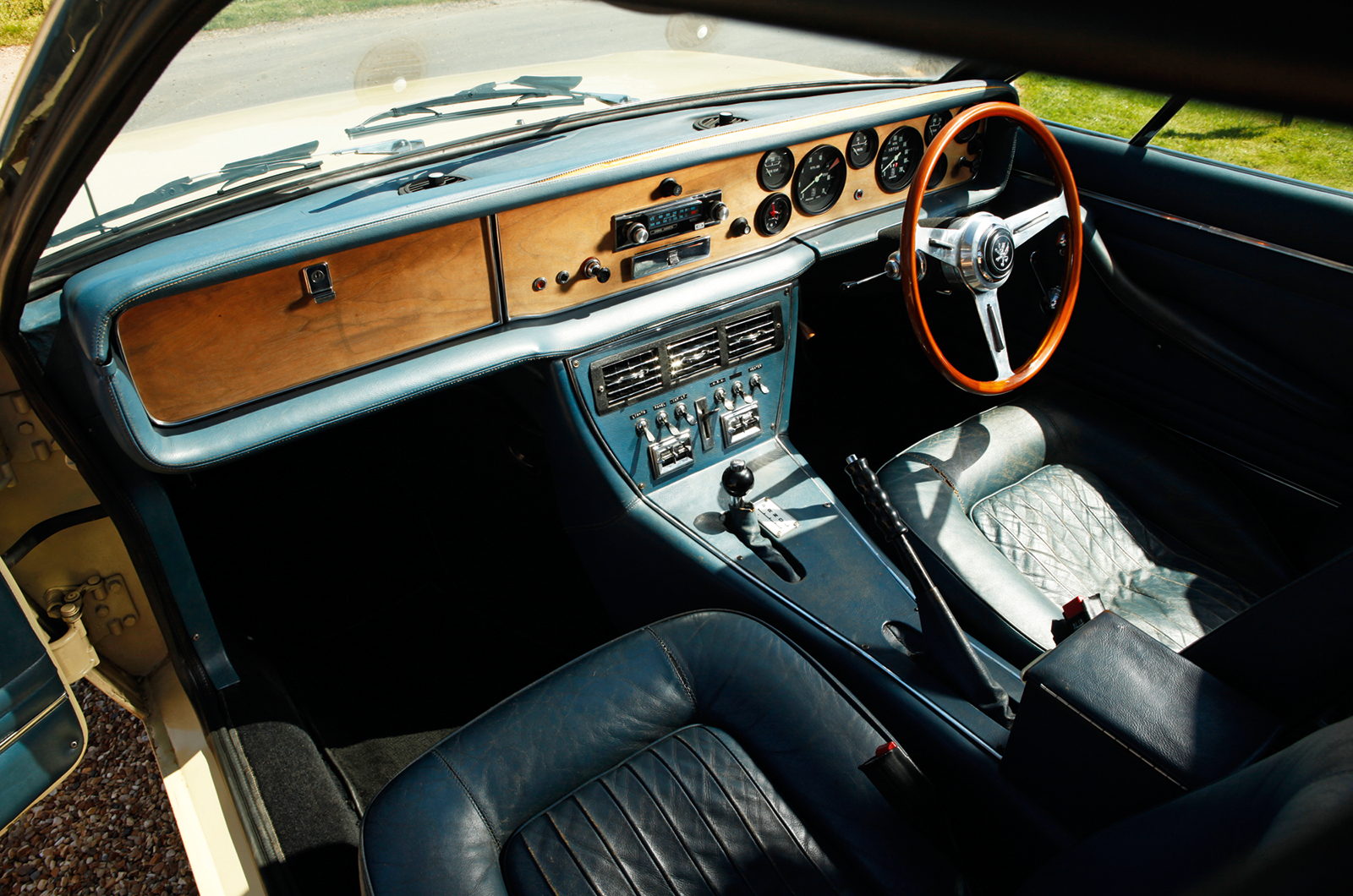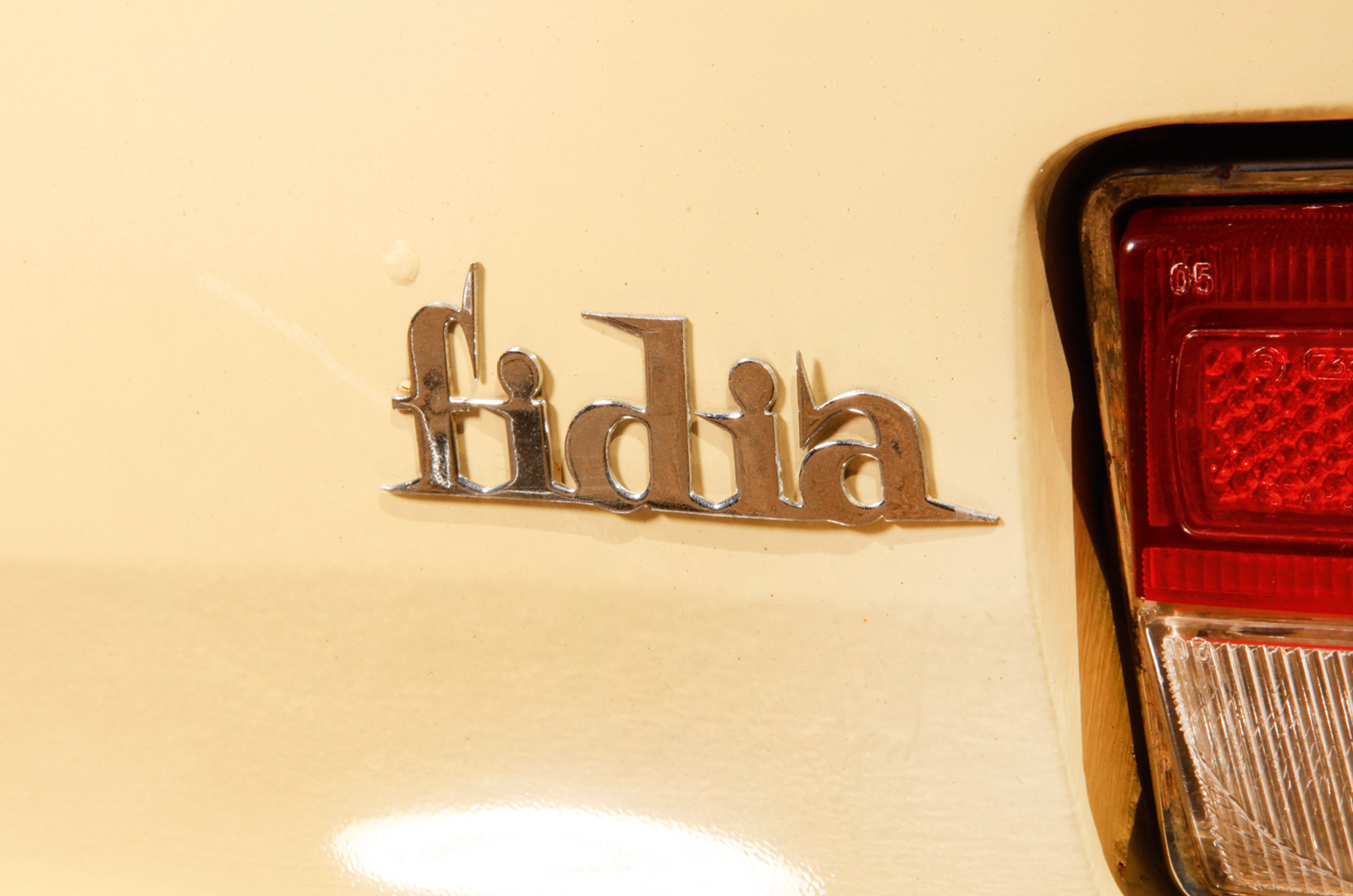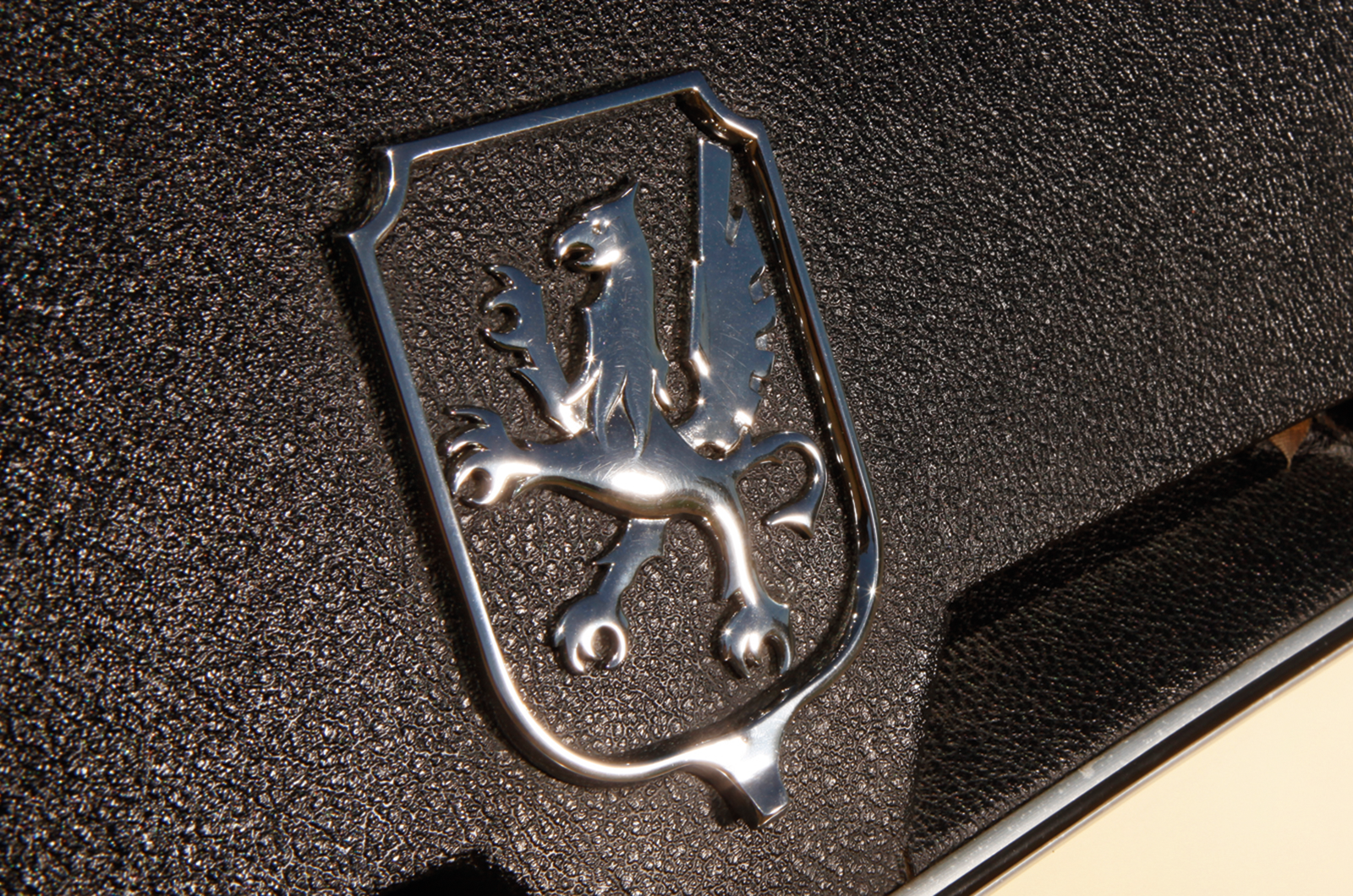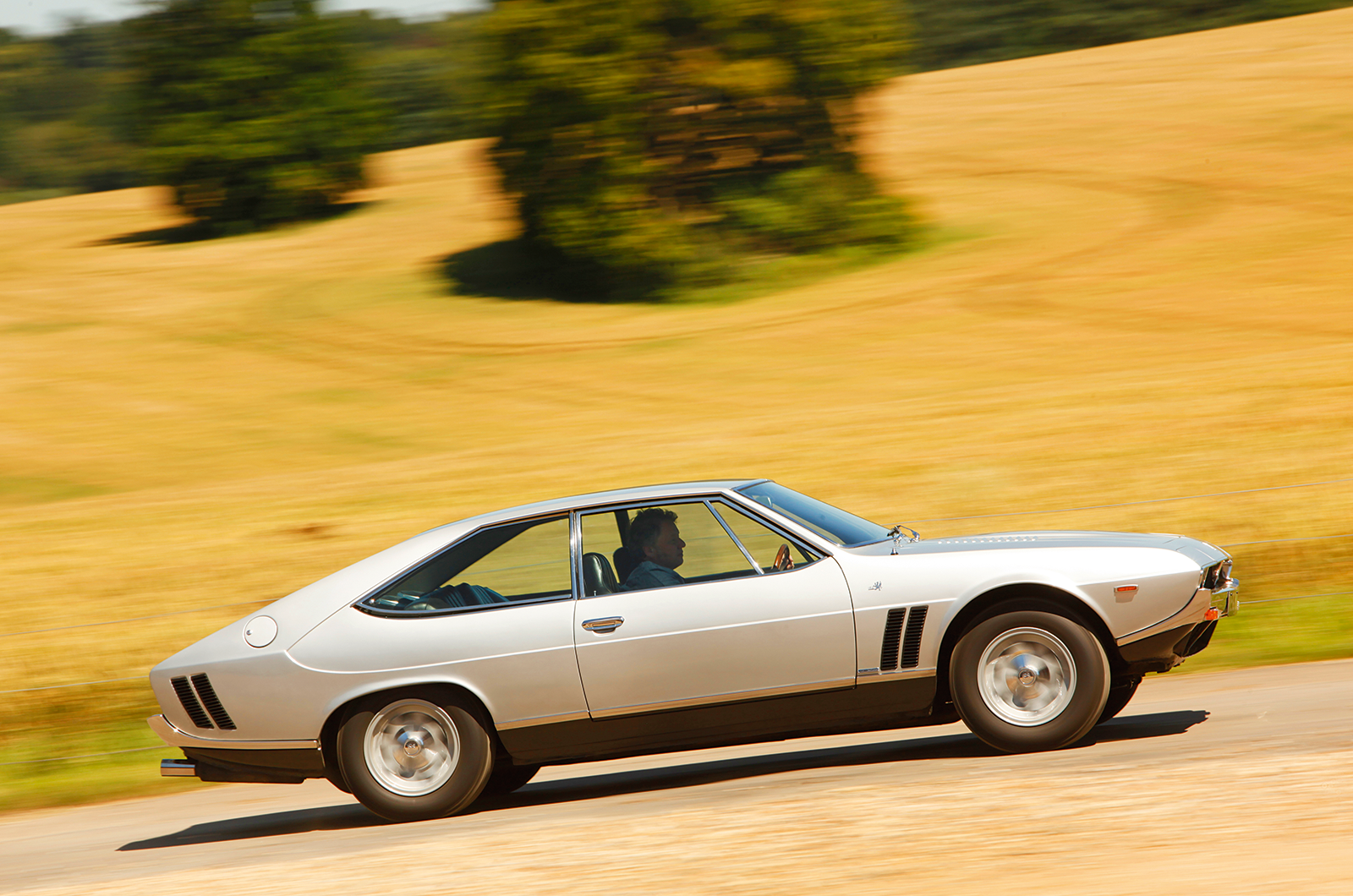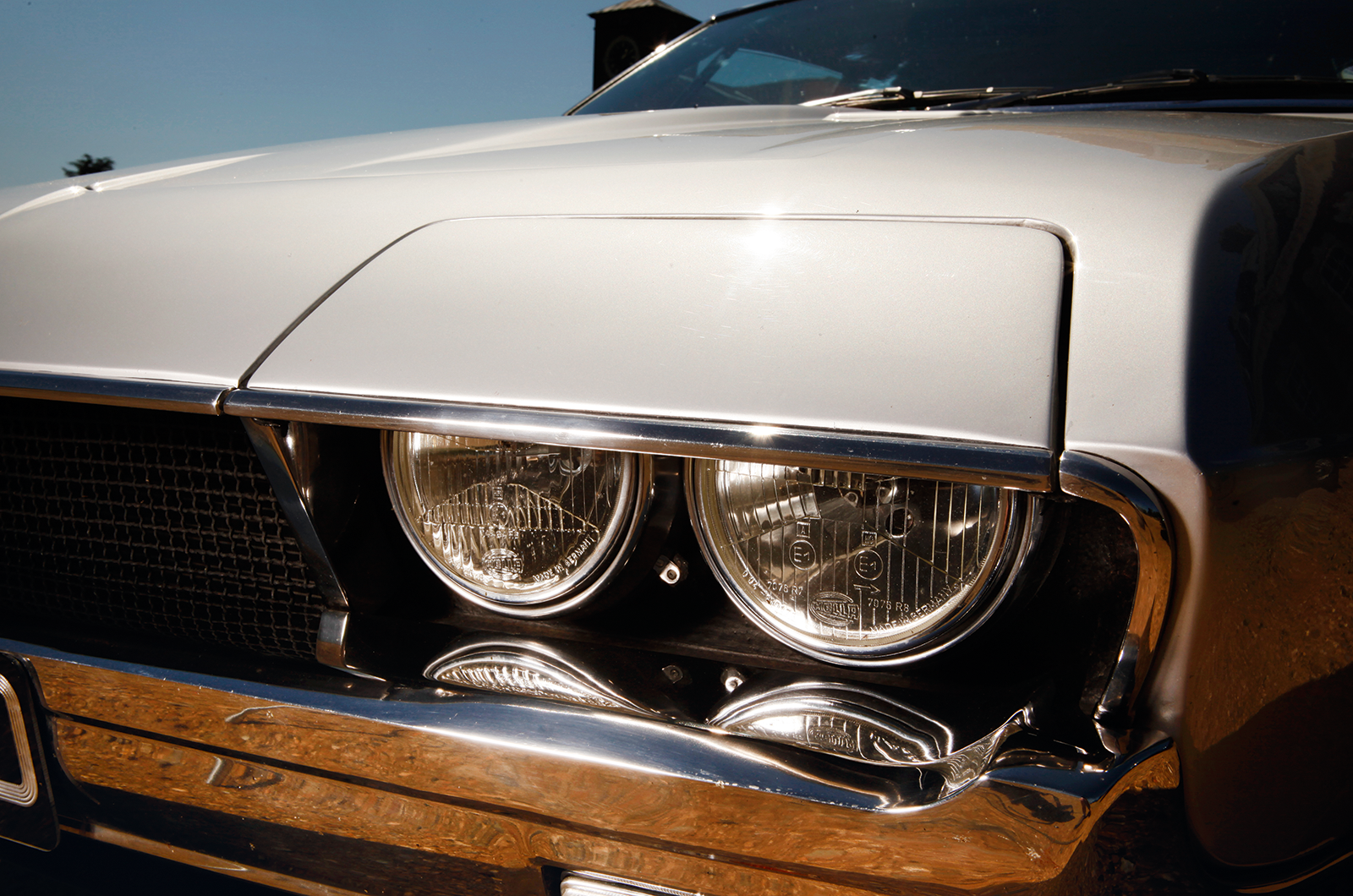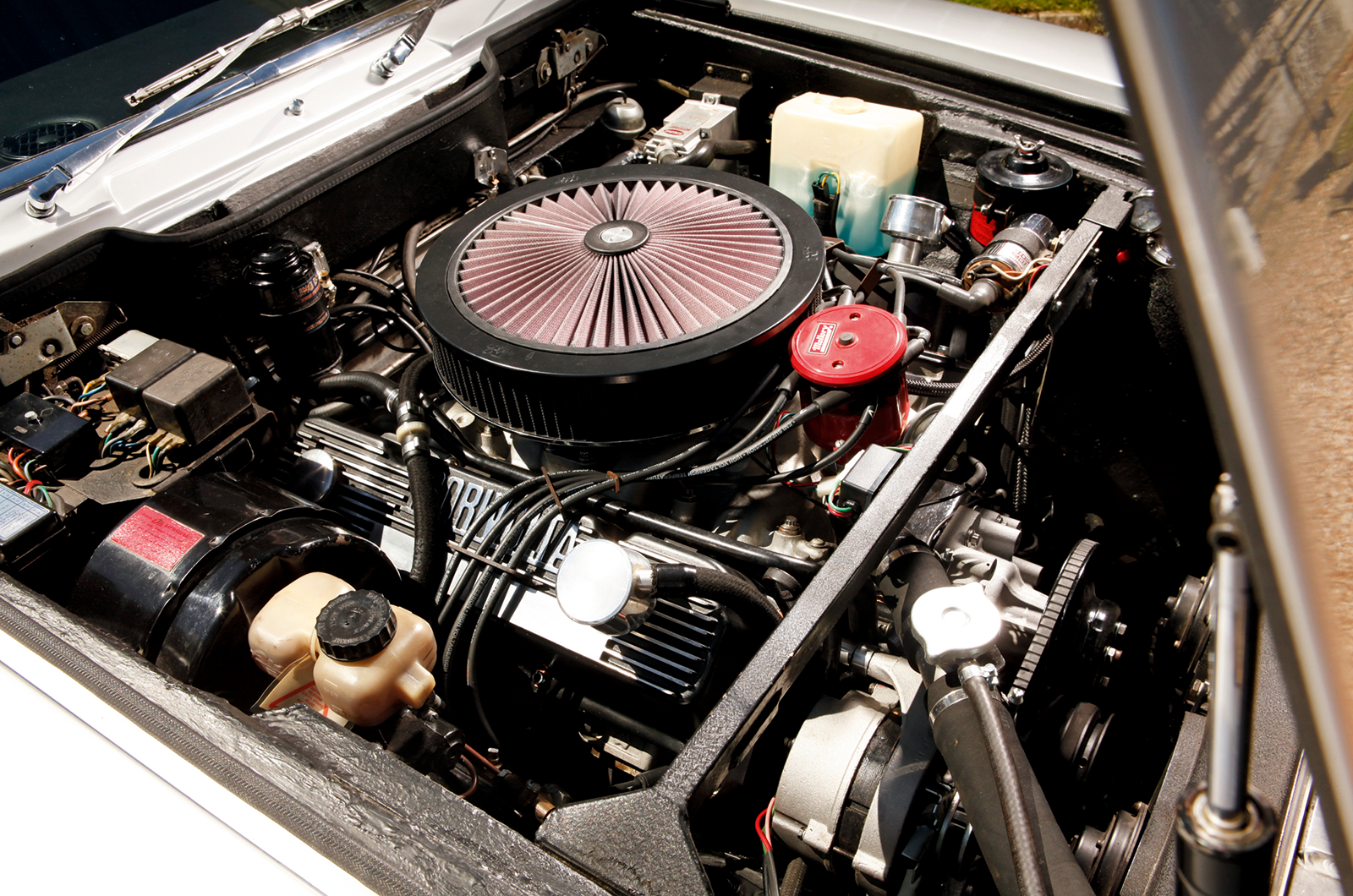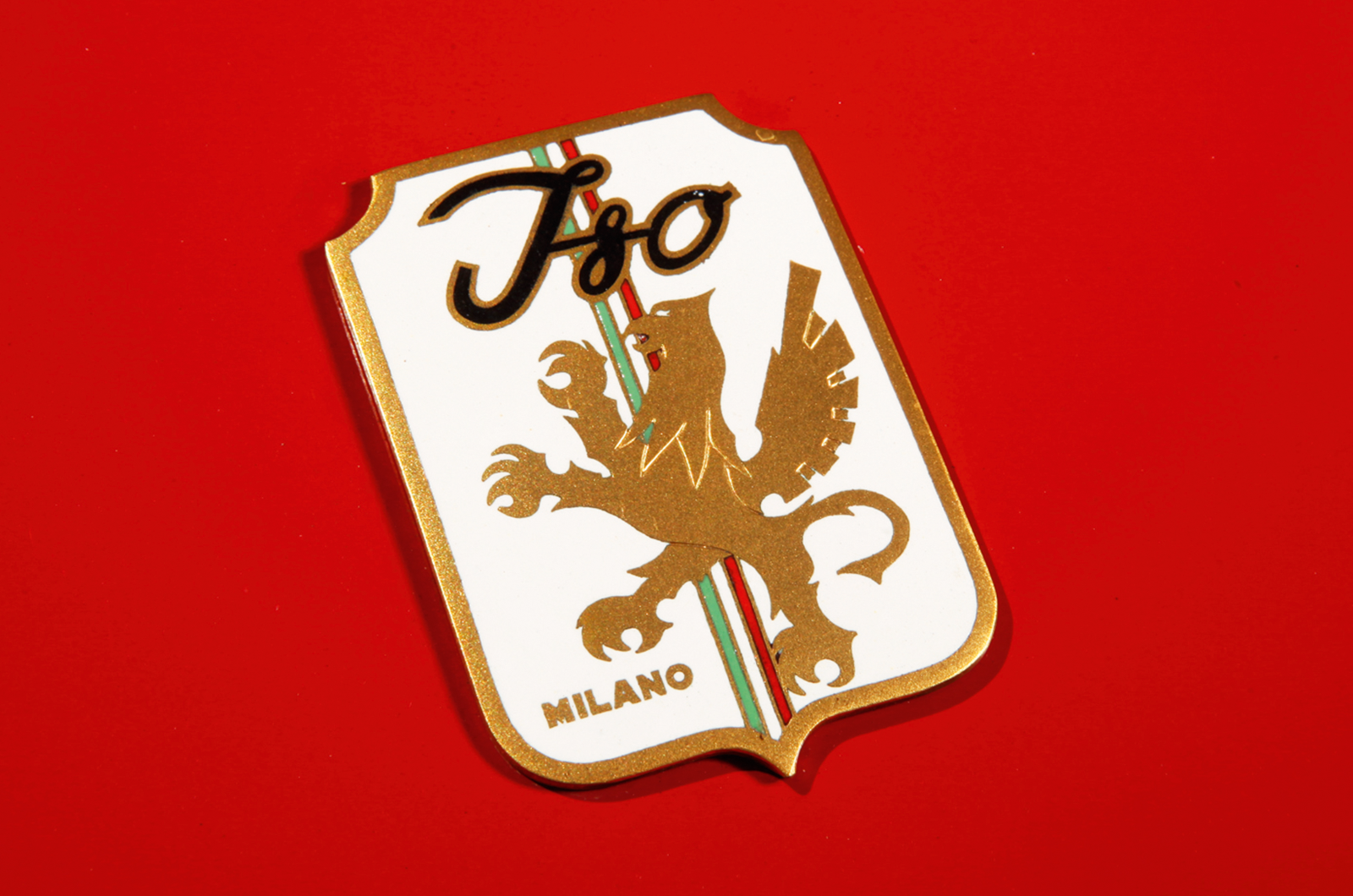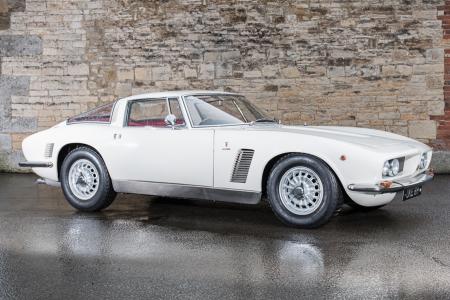Iso was happy to leave the cabins pretty much unchanged in the long-nose Series II Grifos, as represented here by Barry Twitchell’s perfectly restored example, which he has owned since 1976.
I can never quite decide whether I prefer the earlier open-headlight cars or the post-’70 Series II, with the half-covered lamps that give it a more 1970s feel.
This Iso Grifo now packs a 454cu in (7.4) big-block Chevrolet V8
Seventeen of these were built with the same 300 or 350bhp V8 options up to 1972, then an additional 34 with Ford Cleveland 5.7-litre lumps through to 1974.
There were also 24 ‘Can-Am’ Chevrolet 7-litre Series II Grifos with the long nose.
The move to Ford motors was an economically rather than technically motivated decision: Ford simply offered easier terms, rather than GM’s minimum order of 100 engines with cash up front.
The Grifo could have carried the Iso name through the greater part of the 1970s yet not even its power, glamour and raw desirability could survive a fuel crisis or reckon with a constituency of potential buyers (the very rich) who were always looking for the next sensation.
Something faster and wilder-looking soon took its place as the ‘in’ car of the luxo-GT set.
This Champagne metallic SII Grifo was the subject of a major restoration
S4/Fidia & Lele
Projects such as the Fidia and Lele should have given the marque fresh impetus, but they proved to be distractions in a world that was becoming increasingly wary of thirsty supercars.
Yet the idea of a four-door Iso looked like a good one for Piero Rivolta in 1967; here was a new kind of model that his workforce could get behind, and it was entirely the young man’s conception.
With the ageing Maserati Quattroporte then Italy’s only really exotic high-speed sedan, Rivolta saw an opportunity to capture buyers’ imaginations with a fresher and more sophisticated design.
The Fidia is based on a stretched Rivolta platform – and this one was first owned by John Lennon who it is believed had three of the them
This time, he went to Ghia for the shape, yet, because by then Giugiaro was head stylist there, Rivolta knew that he was in safe hands.
The resulting design – launched at Frankfurt in 1967 as the Iso S4 – was not conventionally beautiful but with its deep windows, short tail and simple yet effective detailing (including four square Fiat 125 headlamp units) it looked like the most modern saloon on the road in 1967.
A spacious and well-planned full four-seater, it came with the 300/350bhp engines, the latter’s 144mph making it the world’s fastest four-door.
Like the Rivolta and the Grifo, it was a favourite with the great and the good – John Lennon had three, including John Devile’s car featured here – but quality problems with the Ghia-built bodywork caused Iso to bring production of the S4 in-house after only 45 had been made.
This rare right-hand drive Iso Fidia – about a dozen are thought to have been built for the UK – began life as an S4 but went back to the factory to be upgraded to the later spec
With its structure beefed up, its interior redesigned and better quality control, the renamed Fidia of 1969 was an admission that building saloons was tougher than GTs – there is less room for the eccentricities that might be dismissed in a grand tourer.
This S4 was sent back to the factory at some point to be given Fidia-type improvements.
It’s light and spacious inside, with slender leather seats and a simple, handsome fascia.
I also came to love the shape: glassy and futuristic, like a prop car from an episode of UFO.
I could forgive its heavy low-geared manual steering and the paucity of ratios in the Powerglide transmission, which leaves occasional holes in the performance that even 5.4 litres struggle to plug.
Overall, though, the S4/Fidia is a quick, quiet and tidy-handling supersaloon with just the right feeling of exoticism and rarity.
The Lele – named after Renzo Rivolta’s wife – was meant to have been a successor to the IR300, but only 285 were built
I have always struggled to get excited about the Lele, though. It was devised as a replacement for the Rivolta and was supposed to be a staple four-seater GT built in Iso’s new Varedo factory.
In fact, with only 285 or so produced from 1970 to ’74, it is one of the rarer Iso models.
The lightweight 360bhp Lele Sport is the most collectible, but even the standard automatic was quick – 0-60mph in 7.3 secs, according to Motor.
Road testers also noted that it was the fourth-thirstiest car that they had ever driven!
Elegant details, but the Lele’s quirky looks didn’t prove popular (left); this is the only car of this group powered by a Ford V8
Named after Piero Rivolta’s wife, the Lele was first offered with the usual smallblock engines and then the 351cu in Ford Cleveland.
There were four- or five-speed manual transmissions, or a three-speed GM auto. Iso returned to Bertone for the angular lines, which this time were rendered by chief stylist Marcello Gandini.
It is impressive to look at from some angles – and has pretty wheels, something Iso always did well – but is somehow neither as daring nor as unusual as the Fidia, or as beautiful as the Grifo.
And yet you will never drive a better-sorted Iso than this silver Lele, also owned and restored by the fastidious Twitchell.
Tastefully leather-clad inside, it feels expensive and ‘boutique’. Like more than half of all Leles, it is Ford-powered, with a delightfully easy five-speed ZF ’box and power steering.
Is the Iso name now on the rise again?
It feels like a car that you could live with day-to-day – the Twitchells did, in fact – cruising peacefully in the high top gear with the tinted windows shut at 3000rpm, or snaking up the road with the tyres alight.
In other words, just the combination of virility and refinement that Mr Rivolta Snr had in mind in 1962.
In the decades since Iso wowed the Turin Salon with the Corvette-powered, Bertone-bodied IR300, the American-engined European exotica of the 1960s has come of age.
For every purist who wouldn’t give you his cravat for a Grifo, a Lele or a Fidia, there are now a dozen others for whom this blend of European roadholding and American power represents the ideal combination – muscle and finesse in the couture threads of Italian fashion.
Images: Tony Baker
Thanks to Jason Yorke-Edgell and the owners; Beechwood Park School
This was originally in our October 2012 magazine; all information was correct at the date of original publication
READ MORE
Family fortunes: Ferrari 400GT vs Lamborghini Espada vs Iso Lele vs Maserati Indy 4200
Open for business: Maserati A6GCS by Frua
Ferrari 250 Testa Rossa: Refined to perfection
Martin Buckley
Senior Contributor, Classic & Sports Car
